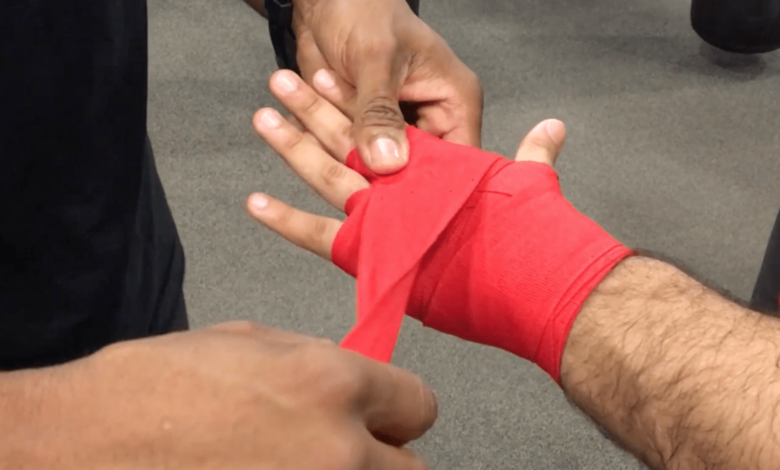Wrap Hands for Boxing with Short Wraps: Essential Tips for Hand Protection

Boxing is a demanding and intense sport that requires physical prowess, skill, and precision. When you step into the ring, your hands are your most valuable tools, and protecting them is essential. One of the key ways to safeguard your hands and wrists is by learning how to wrap your hands properly. In this article, we’ll focus on the technique of wrapping your hands for boxing using short wraps, offering essential tips and insights to help you keep your hands in the best possible condition as per Surprise Boxing.
Why Hand Wraps Are Essential
Boxers rely on their hands to deliver powerful punches and fend off their opponents. However, the act of striking a target, whether it’s a heavy bag, focus mitts, or an opponent’s body, generates tremendous force and impact. This constant impact can lead to various hand injuries, including sprains, fractures, and even long-term issues like arthritis. Hand wraps serve as a critical barrier to protect your hands, wrists, and knuckles from the rigors of training and fighting.
Short Wraps vs. Long Wraps: Understanding the Difference
Before delving into the details of wrapping your hands with short wraps, it’s important to understand the distinction between short wraps and long wraps. Long wraps are typically longer, ranging from 180 to 200 inches, and are designed for a more comprehensive hand and wrist support. These are often preferred for professional fighters or those who require maximum protection.
On the other hand, short wraps, which are usually around 108 inches, are a more practical choice for many boxers. They are quicker to put on and provide adequate protection for most training and sparring sessions. Short wraps are ideal for those who want to wrap their hands efficiently without sacrificing safety.
Step-by-Step Guide to Wrapping Your Hands with Short Wraps
- Prepare Your Wraps: Start by ensuring your short wraps are clean and in good condition. It’s essential to maintain your wraps properly to prevent any bacterial growth or odors.
- Wash Your Hands: Always begin with clean hands to prevent any contaminants from getting trapped under the wraps.
- Secure the Thumb Loop: Most short wraps have a loop for your thumb. Place your thumb through this loop to secure the wrap in place.
- Wrap Around Your Wrist: Begin by wrapping the short wrap around your wrist a few times to provide a solid base for support. Make sure it’s snug but not too tight to restrict blood flow.
- Wrap Over the Back of Your Hand: After securing your wrist, bring the wrap over the back of your hand, angling it across your knuckles and down towards your thumb.
- Protect Your Knuckles: Wrap the short wrap around your knuckles, making sure it’s tight enough to provide support but not so tight that it restricts your hand’s natural movement. You should be able to make a fist comfortably.
- Cross Over the Back of Your Hand: After wrapping your knuckles, cross the wrap back over the back of your hand, covering the spaces between your fingers.
- Secure Your Wrist Again: Once you’ve covered the spaces between your fingers, wrap the wrap around your wrist again. This provides additional support and locks the wrap in place.
- Wrap Around Your Thumb: After securing your wrist, bring the wrap around your thumb, covering it entirely. This helps stabilize your thumb and prevent injuries.
- Complete the Wrap: Continue wrapping the short wrap around your wrist and back over your knuckles, reinforcing the protection you’ve created. Finish by securing the wrap with a hook-and-loop closure or by tucking it under the final wrap.
Tips for Effective Hand Wrapping with Short Wraps
- Maintain Consistency: Keep the tension even throughout the entire wrapping process. This consistency ensures proper support and protection.
- Check for Comfort: While the wrap should be snug to offer support, it should not be so tight that it causes discomfort or restricts movement.
- Secure the Thumb: Pay special attention to wrapping your thumb. A well-secured thumb wrap helps prevent thumb injuries and improves your punching technique.
- Practice Makes Perfect: Wrapping your hands with short wraps may take some practice to get it just right. Be patient and keep refining your technique until you find what works best for you.
The Benefits of Short Wraps for Boxing
Using short wraps for boxing offers several advantages:
- Efficiency: Short wraps are quicker to put on and take off, saving valuable training time.
- Mobility: Short wraps allow for greater hand and wrist mobility, making it easier to throw punches and spar effectively.
- Versatility: Short wraps are suitable for a variety of training activities, from heavy bag workouts to pad work and sparring.
- Comfort: Short wraps are more comfortable for many boxers, as they provide adequate support without feeling too restrictive.
- Affordability: Short wraps are often more budget-friendly than their longer counterparts, making them a cost-effective choice.
Conclusion
Properly wrapping your hands for boxing with short wraps is an essential skill that all boxers should master. Short wraps offer efficiency, comfort, and versatility while providing the necessary protection for your hands and wrists. By following the step-by-step guide and tips outlined in this article, you can ensure that your hands are well-protected during your training and sparring sessions. Remember that practice makes perfect, so take the time to refine your wrapping technique and make it a seamless part of your boxing routine. With well-wrapped hands, you can focus on honing your skills, improving your performance, and staying injury-free in the world of boxing.



